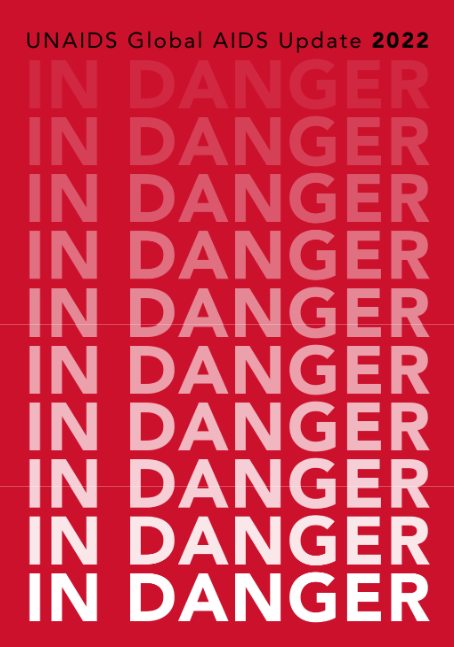
New data from UNAIDS on the global HIV response reveals that during the last two years of COVID-19 and other global crises, progress against the HIV pandemic has faltered, resources have shrunk, and millions of lives are at risk as a result. The new report, In Danger, is being launched ahead of the International AIDS Conference in Montreal, Canada.
Globally the number of new infections dropped only 3.6% between 2020 and 2021, the smallest annual decline in new HIV infections since 2016. Eastern Europe and central Asia, Middle East and North Africa, and Latin America have all seen increases in annual HIV infections over several years. In Asia and the Pacific – the world’s most populous region – UNAIDS data now shows new HIV infections are rising where they had been falling. Climbing infections in these regions are alarming. In eastern and southern Africa rapid progress from previous years significantly slowed in 2021. There is some positive news, with notable declines in new HIV infections in western and central Africa and in the Caribbean, but even in these regions, the HIV response is threatened by a tightening resource crunch.
“These data show the global AIDS response in severe danger. If we are not making rapid progress then we are losing ground, as the pandemic thrives amidst COVID-19, mass displacement, and other crises. Let us remember the millions of preventable deaths we are trying to stop,” said UNAIDS Executive Director Winnie Byanyima.
Faltering progress meant approximately 1.5 million new infections occurred last year – over 1 million more than the global targets.
Marked inequalities within and between countries, are stalling progress in the HIV response, and HIV is further widening those inequalities.
New infections occurred disproportionately among young women and adolescent girls, with a new infection every two minutes in this population in 2021. The gendered HIV impact, particularly for young African women and girls, occurred amidst disruption of key HIV treatment and prevention services, millions of girls out of school due to pandemics, and spikes in teenage pregnancies and gender-based violence. In sub-Saharan Africa, adolescent girls and young women are three times as likely to acquire HIV as adolescent boys and young men.
During the disruptions of the last few years, key populations have been particularly affected in many communities – with rising prevalence in many locations. UNAIDS data have shown increasing risk of new infections faced by gay men and other men who have sex with men (MSM) globally. As of 2021, UNAIDS key populations data show MSM have 28 times the risk of acquiring HIV compared to people of the same age and gender identity while people who inject drugs have 35 times the risk, sex workers 30 times the risk, and transgender women 14 times the risk.
Racial inequalities are also exacerbating HIV risks. In the United Kingdom and United States of America, declines in new HIV diagnoses have been greater among white populations than among black people. In countries such as Australia, Canada and the United States, HIV acquisition rates are higher in indigenous communities than in non-indigenous communities.
The report also shows that efforts to ensure that all people living with HIV are accessing life-saving antiretroviral treatment are faltering. The number of people on HIV treatment grew more slowly in 2021 than it has in over a decade. And while three-quarters of all people living with HIV have access to antiretroviral treatment, approximately 10 million people do not, and only half (52%) of children living with HIV have access to lifesaving medicine; the gap in HIV treatment coverage between children and adults is increasing rather than narrowing.
Global shocks including the COVID-19 pandemic and the Ukraine war have further exacerbated risks for the HIV response. Debt repayments for the world’s poorest countries reached 171% of all spending on healthcare, education and social protection combined, choking countries’ capacities to respond to AIDS. Domestic funding for the HIV response in low- and middle-income countries has fallen for two consecutive years. The Ukraine war has dramatically increased global food prices, worsening food insecurity for people living with HIV across the world, making them much more likely to experience interruptions in HIV treatment.
“We can end AIDS by 2030 as promised,” said Ms Byanyima. “But what it takes is courage.”



